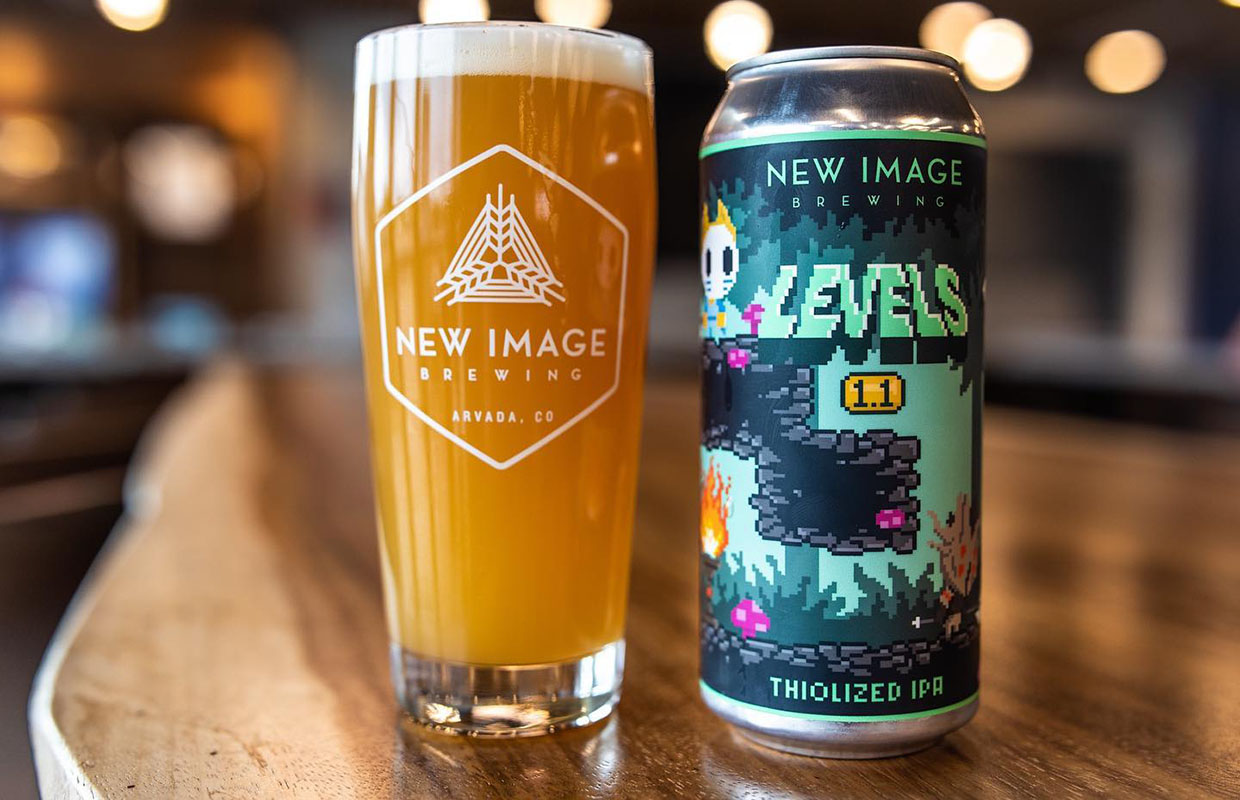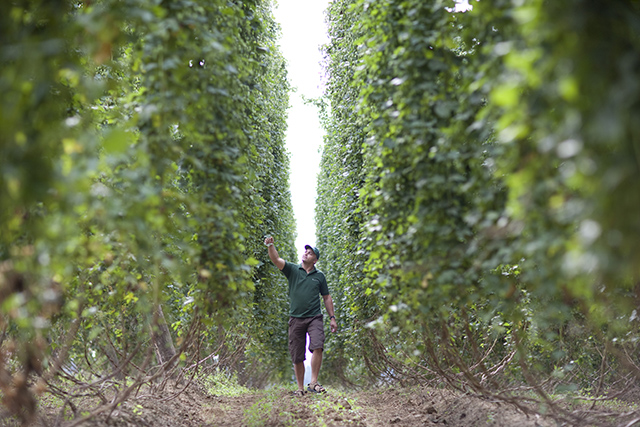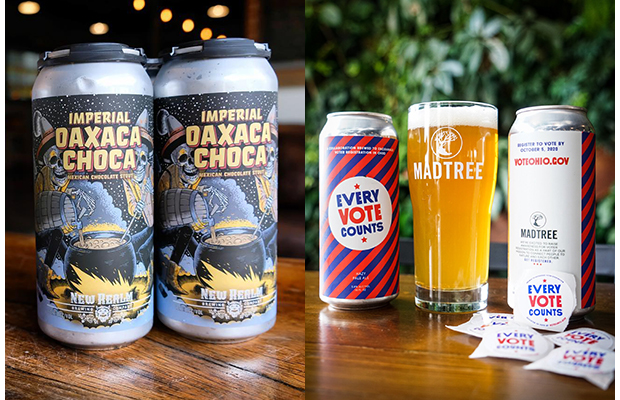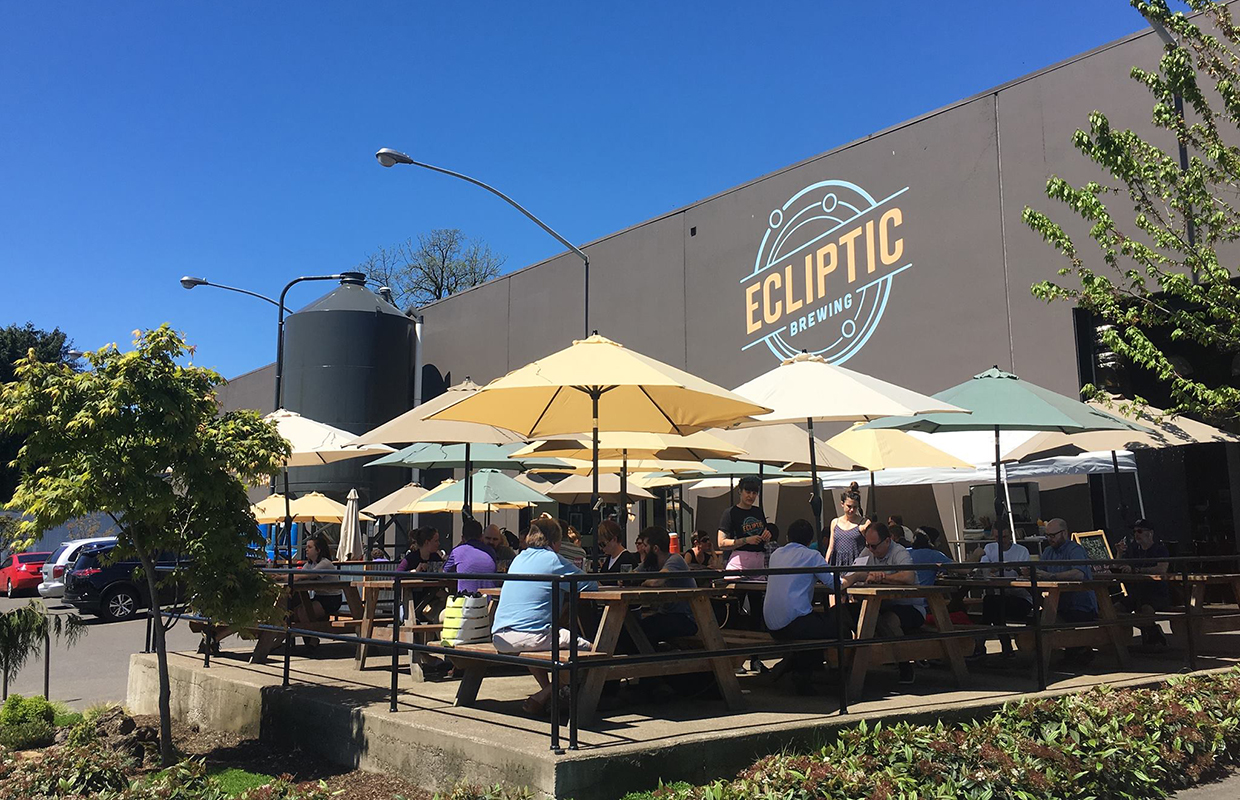
New Image wasn’t happy with how they were told to use Phantasm, so like any brewery … they have been experimenting.
“The first recommendations that we received from Phantasm about using it was to use it in early fermentation,” recalled New Image founder Brandon Capps, adding that they were told to use a lot of it as well. “We tried all that. Our first impression was, honestly, this didn’t do as much as I expected it to for how much it cost.”
Many breweries may have had similar results and decided to pass on the Thiolized IPA trend. New Image dug further into it and has been happy with the results, both using Phantasm powder and yeasts like Omega’s Cosmic Punch to find what helps push this style forward.
The first thing that Capps said New Image changed was the addition timing of Phantasm.
“The first time we added it was kind of late, mid-fermentation, but not fully completed,” he said. “It (thiols) was there, but it wasn’t very prominent. So my thought was, well, if this is about producing more fermentation-derived flavor, then we should be introducing this ingredient at the earliest possible time, which would be the whirlpool.”
He noted that adding it earlier than that in the boil could potentially denature some of the molecular structure, or volatizite it.
READ MORE: Want to Market a Thiolized IPA? Try This
“I figured to try the whirlpool because that’s going to make sure it’s really well integrated prior to fermentation,” he said. “The other thing would be to just add it straight into the fermenter during fermentation, but with it being a powder, they are just notoriously terrible at dissolving into weak alcohol solutions.”
That tweak to when to add it had a pretty significant impact.
“When we were trying to elicit more of the tropical sulfur compound character, but not trying to make it taste grapey, per se,” he added. “The thought there was this is a bit about creating a precursor to a substrate that is relatively low in molecular concentration.
“Why don’t we just decrease this dosage rate, but keep the addition timing the same.”
So they reduced the dosage rate but kept the addition of it to the whirlpool.
“That had a pretty great impact,” Capps noted. “It lowered the intensity of the grapey character that we were getting from the Phantasm.”
When New Image was using it at a higher addition rate, but with the grapiness kind of pulling back, Capps said they were able to notice more of the tropical character that they were initially trying to achieve coming through more noticeably.
Thiolized Yeast
From there, they started to experiment with thiolized yeast strains. That was like a “full-on game changer,” Capps said.
“When the thiolized yeast strains emerged, we pulled back the dosage rate even more,” he added. “I think the major parameter of dialing this in has been ingredients selection dosage rate and addition timing, more so than anything else.
“We’ve been really trying to look at what other substrates are there to produce thiol precursors as well as free thiols.”
Two Ways to Build Thiols
There are two ways to build this profile, he said. Through the creation of thiols via fermentation or just the addition of flavor-active thiols that are in certain products, like hops.
“We’ve been focusing on blending the precursor substrate to produce thiols in fermentation, and then also doubling down on what we’re getting from fermentation by just adding in readily available free thiols from other substrates that are higher in that so like, Nelson Sauvin,” Capps said. “It’s an example of a hop that’s really high in free thiols. Mosaic are pretty high as well.”
On the hot side, New Image has been focusing on using hops like New Zealand Cascade and Motueka along with Southern Cross. They are hops that are really high in thiol precursors.
“It’s all about finding where’s the right place, the right dosage rate, and the correct timing to add all of these different pieces to this larger puzzle that is a Thiolized IPA,” he said.
The “Levels” New Image Has for Experimenting
To dig into these slight differences, New Image has created a Levels series, which Capps said is a very conspicuous way to observe these smaller changes.
“We’ve been tweaking to try to figure out which ingredients deliver the most for what we’re trying to get out of this,” he said. “I think something like this has been intriguing to me because I’m from an engineering background, and very much a numbers guy. I tend to get hung up on the lab reports that people send me. Like this Motueka has three times the amount of precursor that Southern Cross had. So in theory, this should be … like three times better. But in doing side-by-side between Southern Cross and this high mmh precursor Motueka, I realized maybe this is higher in this precursor, but maybe the aroma content it produces isn’t actually as powerful. Even if it’s at a higher threshold, or maybe it’s not as pleasant.
“So it’s been interesting to try to use a combination of scientific techniques, but then also this subjective, personal feedback from both us at the brewery and consumers on what efforts we’re making that are actually producing desirable results.”
It’s something Capps says as brewers they seem to forget about sometimes.
“You can tell people numbers all day long, but if they don’t think it tastes better, it doesn’t really fucking matter,” he said. “So we’ve been trying to split the differences of reading ASBC articles and old papers published by Miller/Coors in the 70s, and different wine publications, to try to get ideas of what parameters to tweak. But at the end of the day, we’re trying to do this in as much of a fashion as to just be: which one of these rates better, which one of these sells faster? Which ones do we just think taste better in our opinion, because ultimately, that’s what’s really more, what should be beheld to is whether or not people like drinking the thing.”





Be the first to comment